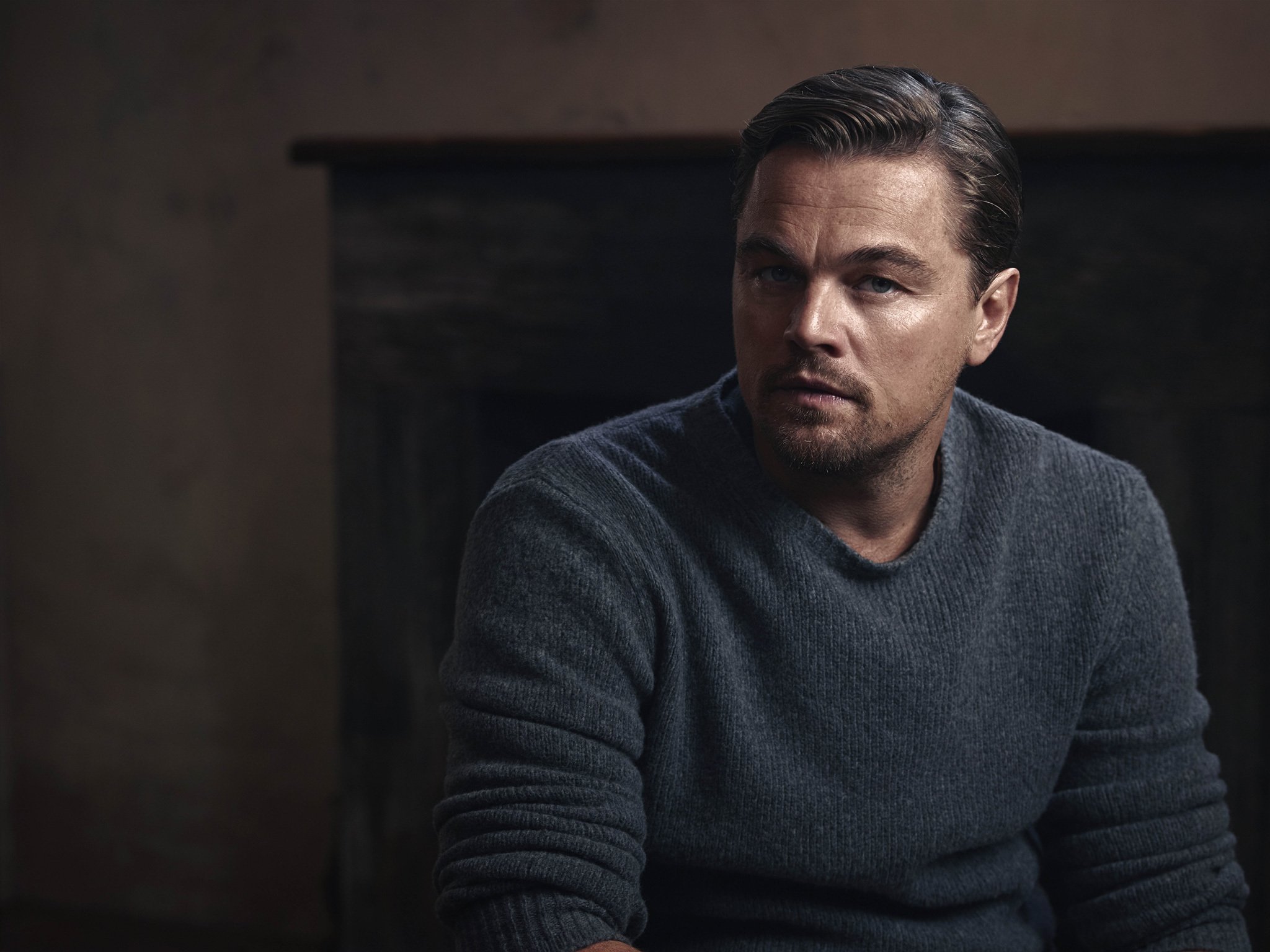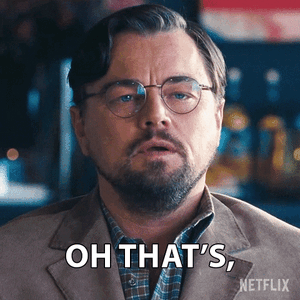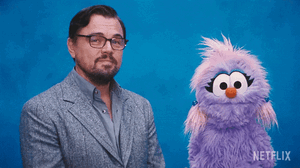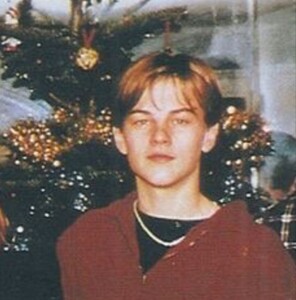
Everything posted by akatosh
-
Leonardo DiCaprio - (Please Read First Post Prior to Posting)
Thanks to everybody who posted news and pics! Another new project: ‘Home’: Martin Scorsese & Leonardo DiCaprio Reuniting For Marilynne Robinson Adaptation At Apple Veteran filmmaker Martin Scorsese has been mulling over a bunch of potential next movie projects since finishing up “Killers of The Flower Moon” (things like “The Wager,” “The Devil In The White City,” a Frank Sinatra biopic, “The Life of Jesus,” and a Hawaii-set crime drama), and the latest one, “Home,” is set to see him reunite with his modern muse, Oscar-winner Leonardo DiCaprio (“The Revenant”). What looks like an official press release from Apple via Publishers Weekly, an announcement has been made that sees Scorsese set to direct, write, and produce an adaptation of the Marilynne Robison novel “Home” with the help of fellow director Todd Field and work on bringing the Gilead series to life. DiCaprio is also mentioned as the film’s lead, making this his seventh collaboration with Scorsese after films such as “Killers of The Flower Moon,” “The Departed,” “Gangs of New York,” “Shutter Island,” “The Aviator,” and “The Wolf of Wall Street.” “Home” is part of Robinson’s Gilead series examining a bunch of elements such as faith and rural life set in the fictional plains town of Gilead, Iowa. The novel’s original logline via Chapters Indigo reads: Glory Boughton has returned to Gilead to care for her dying father. soon her brother, Jack—the prodigal son of the family, gone for twenty years—comes home too, looking for refuge and trying to make peace with a past littered with torment and pain. A troubled boy from childhood, an alcoholic who cannot hold a job, Jack is one of the great characters in recent literature. He is perpetually at odds with his surroundings and with his traditionalist father, though he remains Reverend Boughton’s most beloved child. Brilliant, beguiling, lovable, and wayward, Jack forges an intense new bond with Glory and engages painfully with John Ames, his godfather, and namesake. Scorsese’s Sikelia Productions and DiCaprio’s Appian Way Productions will be producing the pic that is officially set at Apple Original Films, where the director had just made “Killers of The Flower Moon.” A production start or release date hasn’t been made official, given the deal seemingly was just finalized with Apple, but we’re sure those details will be revealed down the line. https://theplaylist.net/home-martin-scorsese-leo-dicaprio-marilynne-robinson-apple-todd-field-20250310/
-
Leonardo DiCaprio - (Please Read First Post Prior to Posting)
More Plot Details for PTA's ‘One Battle After Another' February 24, 2025 Jordan Ruimy I’ve already reported on Paul Thomas Anderson’s “One Battle After Another” having recently test screened, back in late January. I have more plot details on the film. This will be a brief summary of what awaits us in the PTA’s latest. Leonardo DiCaprio and Teyana Taylor are the Bonnie and Clyde of the film, activists for civil rights who get involved with an anti-government group, which includes Alana Haim and Regina Hall’s characters. Regina mentors and trains DiCaprio’s daughter (Chase Infinit). Sean Penn is the villain, Sgt. Lockjaw, described as an “alt-right” Richard Spencer-type who joins a “white supremacy” group. The film, clocking in at close to 3 hours, is a relentless chase movie that has Lockjaw and the white nationalist group going after DiCaprio, Taylor, Hall and Infiniti. The film is being described as PTA’s most “commercial” effort to date; a 3-hour chase movie that goes from one big set-piece to the next. The action is relentless. It’s also highly political, and is supposed to “mirror” some of the hot button topics of today’s America. Warner Bros invested $140M+ on this film. “One Battle After Another” is supposed to be released in theaters on August 8, 2025, but word is that it might change that date for a fall launch, and will have its world premiere at the Venice Film Festival in September. For the time being, we’ve had no trailer, let alone any official stills, released of the film. https://www.worldofreel.com/blog/2025/2/22/pta
-
Leonardo DiCaprio - (Please Read First Post Prior to Posting)
- Leonardo DiCaprio - (Please Read First Post Prior to Posting)
Leo will be working again soon Damien Chazelle’s Evel Knievel Biopic, Starring Leonardo DiCaprio, Shoots This Summer Remember back in December when I reported on Damien Chazelle directing an Evel Knievel biopic with Leonardo DiCaprio attached to star? Well, not only is it now happening, but it’s coming much sooner than expected. Puck’s Matt Belloni is saying a deal is basically sealed for DiCaprio to star, and that the film is supposed to shoot this summer. William Monahan (“The Departed”) wrote the original draft, but the latest version has a draft by Terence Winter (“The Wolf of Wall Street,” “The Sopranos”) with Chazelle revising. This will also not be a straightforward rise and fall biopic. Instead, the story is set in a single year, 1974, and tackles Knievel’s ambitious planning to jump across Idaho’s Snake River on his motorcycle. Knievel was an American stunt performer and entertainer, known for his motorcycle jumps (and bad temper). During his stunt career, Knievel suffered more than 433 bone fractures, earning an entry in the Guinness Book of World Records as the survivor of "most bones broken in a lifetime.” Knievel ruined his career when he attacked a man with a baseball bat due to an unflattering book written about him. The victim was knocked unconscious and needed major surgery to repair his arm. Knievel served 6 months in jail, but lost all his endorsements and contracts. Chazelle’s last film, “Babylon,” tanked at the box-office, making $63M against a production budget of a little under $100M. “Babylon” ultimately lost Paramount an estimated $87 million. Oddly enough, it was a huge hit in France, with both critics and audiences. Earlier this year, Chazelle had mentioned almost being done writing a new script and that, although he was about to pitch it to a studio, an uncertainty lingered in his head as to how Hollywood would welcome him back into fold after “Babylon.” However, with someone like DiCaprio attached to star, it’s not that surprising to see that Paramount is greenlighting the project. If you remember, DiCaprio was originally supposed to star in Chazelle’s “Babylon” before having to drop out due scheduling issues. He was later replaced by Brad Pitt. DiCaprio recently wrapped shooting Paul Thomas Thomas Anderson’s “One Battle After Another” which is set for 2025 release. https://www.worldofreel.com/blog/2025/2/21/damien-chazelles-evel-knievel-biopic-starring-leonard-dicaprio-shoots-this-summer- Leonardo DiCaprio - (Please Read First Post Prior to Posting)
Another new project: Town Says Aloha To A Hawaii-Set ‘Goodfellas’ Meets ‘The Departed:’ Scorsese, DiCaprio, Dwayne Johnson & Emily Blunt Top Crime Drama Package EXCLUSIVE: The hot package in town is a pitch for a Martin Scorsese-directed untitled drama that would star Dwayne Johnson, Leonardo DiCaprio and Emily Blunt. The thumbnail description: Imagine Robert De Niro’s Jimmy the Gent character from Goodfellas, but as a ruthless Hawaiian crime boss, based on a real figure, who battled encroaching rivals for control of organized crime in Hawaii. To be written by Nick Bilton, the film focuses on a turbulent time on the island paradise when an aspiring mob boss battled rival crime factions to wrest control of the underworld of the Hawaiian islands. It was a bloody battle, the kind of terrain Scorsese covered in both Goodfellas and The Departed. In 1960s and 70s Hawaii, this formidable and charismatic mob boss rises to build the islands’ most powerful criminal empire, waging a brutal war against mainland corporations and rival syndicates while fighting to preserve his ancestral land. It’s based on the untold true story of a man who fought to preserve his homeland through a ruthless quest for absolute power — igniting the last great American mob saga, where the war for cultural survival takes place in the unlikeliest of places: paradise. Producers include Scorsese, Johnson, Blunt, DiCaprio, Bilton, Dany Garcia, Lisa Frechette and Rick Yorn. This would mean another big collaboration in an historic run for DiCaprio and Scorsese, who just recently worked together on Best Picture nominee Killers of Flower Moon, to go with highlights including The Aviator, The Departed, Gangs of New York, and The Wolf of Wall Street, This also marks a reunion for Blunt and Johnson, who worked together on Jungle Cruise for Disney. It is an especially big opportunity for Johnson, who has roots in Hawaii and long wanted to make a movie there. He has kicked around a movie about King Kamehameha, who in a much different way used his strength and persuasiveness to unite the islands to improve the dealing with the explorers that were finding their way to the island shores. Johnson is paired with Blunt on the Benny Safdi-directed Smashing Machine for A24, coming later this year. It was Blunt and Johnson who brought the idea to Scorsese and DiCaprio, and they all enlisted Bilton, who’ll start writing when this gets set up. Even though these principals are engaged in other projects, the town quickly sparked to the pitch, and we hear multiple bids are either on the table or are fast mobilizing. This is poised to be a big one. Stay tuned. https://deadline.com/2025/02/scorsese-dicaprio-crime-movie-dwayne-johnson-emily-blunt-1236295098/- Leonardo DiCaprio - (Please Read First Post Prior to Posting)
New old interview:- Lily Gladstone
- Leonardo DiCaprio - (Please Read First Post Prior to Posting)
I'm also very excited for this. I hope we'll get to see a trailer soon.- Leonardo DiCaprio - (Please Read First Post Prior to Posting)
Congrats- Leonardo DiCaprio - (Please Read First Post Prior to Posting)
At this point I don't really care that much what he does next. Just start DOING something, Leo! We need more films. Does anybody know when Jen Lawrence will be able to work again?- Leonardo DiCaprio - (Please Read First Post Prior to Posting)
‘Devil In The White City’ Movie Revived At 20th Century With Leonardo DiCaprio And Martin Scorsese Eyeing Reunion EXCLUSIVE: The long-awaited film adaptation of Erik Larson’s bestselling book The Devil in the White City just got a shot of adrenaline, as sources tell Deadline that 20th Century has come on to the project with Leonardo DiCaprio in talks to star and Martin Scorsese in talks to direct. DiCaprio and Scorsese would also produce along with Stacey Sher, Rick Yorn and DiCaprio’s Appian Way partner Jennifer Davisson. Sources add that there is currently no script for the pic, which is based on Larson’s nonfiction classic Devil in the White City: Murder, Magic and Madness at the Fair That Changed America, first published in 2004. DiCaprio and Scorsese have been developing the project for some time, and sources say they always felt this was a story that has resonated throughout the years and still does. DiCaprio first landed rights to the book in 2010, and though the project has gone through various stages of development over the years, (including a TV series adaptation at Hulu that never came to fruition), insiders say that following a meeting with 20th Century execs, all parties were on board to tell this story at the theatrical level. The story follows Dr. HH Holmes, a cunning serial killer believed to have murdered anywhere from 27 to 200 people at a time when the city of Chicago was enthralled with hosting the World’s Columbian Exposition of 1893. The book plays off the contrasts between the hopeful expectations and wonders presented at the exposition and the dark deeds of Holmes, who maneuvered in its shadows and built a carefully-concealed house of horrors. This marks another massive victory for David Greenbaum, who leads Disney Live Action and 20th Century Studios and Steve Asbell, president of 20th, who have been on a roll going back to landing another high-profile package: the Bruce Springsteen pic Deliver Me From Nowhere starring Jeremy Allen White. They quickly followed that by landing the sought-after package The Barrier starring Austin Butler with Edward Berger directing. All three projects line up with what Greenbaum wants for 20th: films that that embody commercial, global theatrical and prestige with A-list talent and original filmmaking. Asbell, Greenbaum and SVP Production Sarah Shepard will be overseeing Devil in the White City for the studio. LBI Entertainment reps DiCaprio, Appian Way and Scorsese, who is also repped by WME. https://deadline.com/2025/01/leonardo-dicaprio-devil-in-the-white-city-martin-scorsese-movie-1236263710/- Leonardo DiCaprio - (Please Read First Post Prior to Posting)
Edward Noprton saved Leo. He has told the story before at some talk show if I remember correctly. Thanks for saving him, Edward! It starts at about 1 minute.- Leonardo DiCaprio - (Please Read First Post Prior to Posting)
I also love Don't Look Up. I thought it was super entertaining and i never understood the hate it got.- Lily Gladstone
- Leonardo DiCaprio - (Please Read First Post Prior to Posting)
Yes. Please say this won't be moved to 2026🙏- Leonardo DiCaprio - (Please Read First Post Prior to Posting)
More Details on Damien Chazelle/Leonardo DiCaprio’s ‘Evel Knievel on Tour’ January 2, 2025 Jordan Ruimy Last month, a report indicated that Damien Chazelle’s next film would tackle stunt devil Evil Knievel, and star Leonardo DiCaprio. It looks like this project is legit. Some more details have now emerged (via Production Weekly). Firstly, the film is called “Evel Knievel on Tour,” and is written by William Monahan (“The Departed”) and Terrence Winter (“The Wolf of Wall Street,” “The Sopranos”). This will also not be a straight up rise and fall biopic. Instead, the story is set in a single year, 1974, and tackles Knievel’s ambitious planning to jump across Idaho’s Snake River on his motorcycle. Knievel was an American stunt performer, and entertainer, known for his motorcycle jumps (and bad temper). During his stunt career, Knievel suffered more than 433 bone fractures, earning an entry in the Guinness Book of World Records as the survivor of "most bones broken in a lifetime.” Knievel ruined his career when he attacked a man with a baseball bat due an unflattering book written about him. The victim was knocked unconscious and needed major surgery to repair his arm. Knievel served 6 months in jail, but lost all his endorsements and contracts. Chazelle’s last film, “Babylon,” tanked at the box-office, making $63 million against a production budget of a little under $100 million. “Babylon” ultimately lost Paramount an estimated $87 million. Oddly enough, it was a huge hit in France, with both critics and audiences. Back in April, Chazelle set up his supposedly next film with Paramount, this one rumored to take place in a prison. It was described as a “mid-budget” drama with action elements. He was supposed to shoot it this fall, but it never happened — did he suddenly get cold feet? A few months later, Chazelle told Vanity Fair that he was now working on two projects, and didn’t know which one was going to get made first. ‘Evel Knievel’ is still in development, but things are revving up fast enough that I wouldn’t be surprised if it is indeed his next film. https://www.worldofreel.com/blog/2025/1/2/more-details-on-damien-chazelleleonardo-dicaprios-evel-knievel-on-tour- Leonardo DiCaprio - (Please Read First Post Prior to Posting)
Happy New Year everyone!🎉🎆- Leonardo DiCaprio - (Please Read First Post Prior to Posting)
Oh no why? I want a new Leo movie in 2025- Leonardo DiCaprio - (Please Read First Post Prior to Posting)
New pics of Leo in St. Barts like every year: https://www.tmz.com/2024/12/29/leonardo-dicaprio-vittoria-ceretti-st-bart-beach-day/- Leonardo DiCaprio - (Please Read First Post Prior to Posting)
- Leonardo DiCaprio - (Please Read First Post Prior to Posting)
Cute video of Leo showing his dance moves 😀 https://www.instagram.com/p/DD2-yhgSFv2/- Leonardo DiCaprio - (Please Read First Post Prior to Posting)
Another new project:- Leonardo DiCaprio - (Please Read First Post Prior to Posting)
Not sure if this was posted...- Leonardo DiCaprio - (Please Read First Post Prior to Posting)
Margot mentioning Leo, WOWS, thinking about Titanic when she needs to cry and talking about seeing Kate visit Leo on set: https://podcasts.apple.com/us/podcast/margot-robbie/id1722148571?i=1000678257012- Kate Winslet
Two Golden Globe noms for Kate - Leonardo DiCaprio - (Please Read First Post Prior to Posting)


